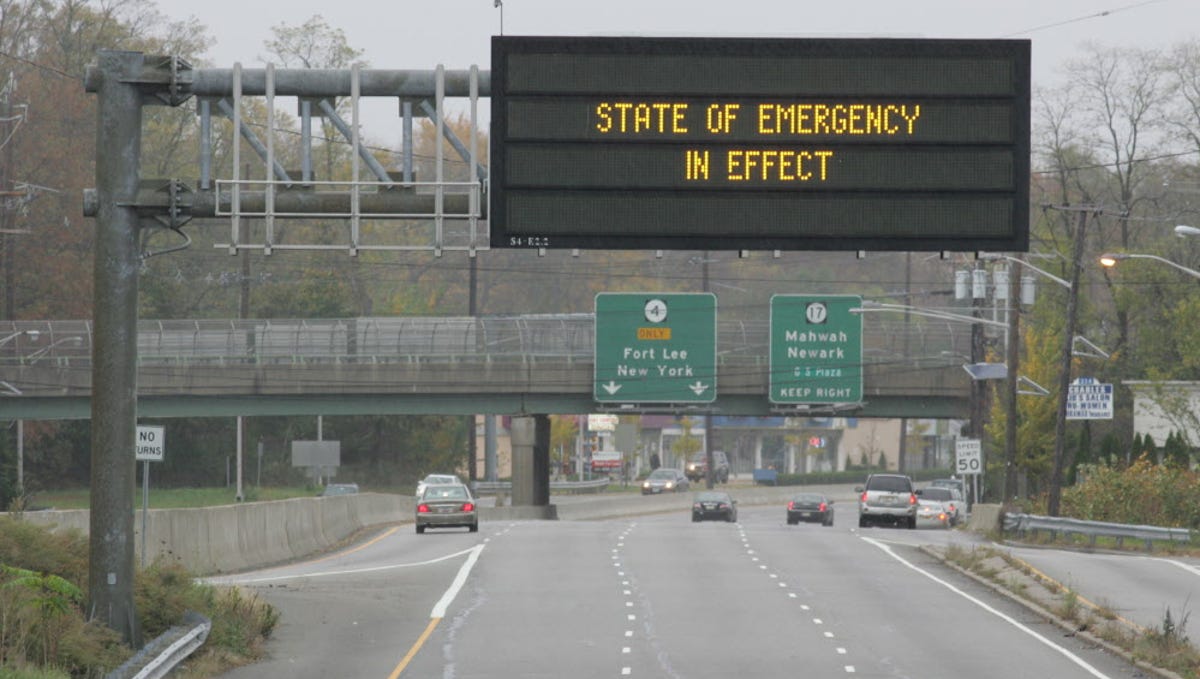 |
| Hurricane Sandy hit New Jersey in 2012 and was considered a statewide emergency. In October of 2012, Hurricane Sandy formed in the Caribbean Sea and was expected to hit New Jersey, according to tropical cyclone forecast models and the National Hurricane Center. On October 29th, Sandy lost the characteristics of a tropical cyclone and transformed into an extratropical cyclone as it was approaching the New Jersey Coast. About two million households lost power, and 346,000 homes were damaged or destroyed. Additionally, President Obama signed an emergency declaration for New Jersey and due to the state of emergency being in effect, Halloween was canceled. |
New Jersey's History of Hurricanes
Hurricane Sandy's Effects on Newark
 |
| Hurricane Sandy caused extremely strong gusts of winds that caused trees to snap as well as power lines, which resulted in a blackout. A lot of Newark's infrastructure is fragile due to old age and a lack of upkeep (which is the government's fault). In fact, Newark (which is the biggest city in New Jersey) was quite vulnerable because of its industrial waterfronts, failing infrastructure, limited resources, and lack of communication systems. On October 30th, about 95% of Newark's residents had no power as many powerlines were down, thus causing power outages throughout the city. Newark is separated into five zones that are called wards—North Ward, South Ward, East Ward, West Ward, and the Central Ward. While all wards endured damage, the East Ward was the area that was hit the hardest with severe flooding and loss of electricity. Emergency calls were made during the peak of the storm in an effort to rescue residents from five feet of floodwaters. On the other hand, the streets of the West Ward, despite being flood prone, faired better than the other wards. In the North Ward, many large branches, trees, and even telephone poles fell—which caused many safety hazards for drivers and pedestrians. My Experience |
 |
| This was actually a couple of blocks away from where I live! |
I was in fourth grade when Hurricane Sandy happened, so I don't remember it being as bad as it was. I was mostly happy because I didn't go to school for about two weeks, and our apartment still had power. However, we were lucky because we live on the only block in the North Ward that did not experience power outages. For me, the worst thing about the hurricane was that Halloween was cancelled and I spent it at home with no candy.
Northern New Jersey did not suffer as horribly as the coast did. Unsurprisingly, media coverage of Hurricane Sandy mostly focused on the damage done to beach houses and condos within coastal cities and towns. My family and I tried our best to keep ourselves updated by watching the news, so when I saw the destruction on TV, I was determined to keep my family safe. I tried gathering all of the flashlights we had (we only had 2 and we're a family of four) and I even went so far as to distribute my light-up toys because I was so convinced that the power would go out at any moment.
Sources:
Coch, Nicholas K. “Unique Vulnerability of the New York–New Jersey Metropolitan Area to Hurricane Destruction.” Journal of Coastal Research, vol. 31, no. 1, 2015, p. 196., https://doi.org/10.2112/jcoastres-d-13-00183.1.
https://patch.com/new-jersey/newarknj/hurricane-sandy-aftermath-in-newark
Eustachewich, Lia. “Sandy Leaves All of Newark Without Power.” Newark, NJ Patch, Patch, 31 Oct. 2012.
Julianna,
ReplyDeleteI appreciated how you gave us historical background of past incidents. It placed the impacts of Sandy into context. It was also interesting to read how scientist had predicted a tropical cyclone that transformed into an extratropical cyclone unexpectedly. Super interesting!